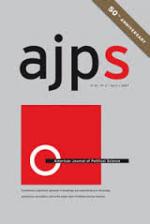Citation:

Date Published:
JANAbstract:
How does segregation shape intergroup violence in contested urban spaces? Should nominal rivals be kept separate or instead more closely integrated? We develop an empirically grounded agent-based model to understand the sources and patterns of violence in urban areas, employing Jerusalem as a demonstration case and seeding our model with microlevel, geocoded data on settlement patterns. An optimal set of parameters is selected to best fit the observed spatial distribution of violence in the city, with the calibrated model used to assess how different levels of segregation, reflecting various proposed virtual futures for Jerusalem, would shape violence. Our results suggest that besides spatial proximity, social distance is key to explaining conflict over urban areas: arrangements conducive to reducing the extent of intergroup interactionsincluding localized segregation, limits on mobility and migration, partition, and differentiation of political authoritycan be expected to dampen violence, although their effect depends decisively on social distance.
Notes:
American Journal of Political Science Best Article Award (2014)
